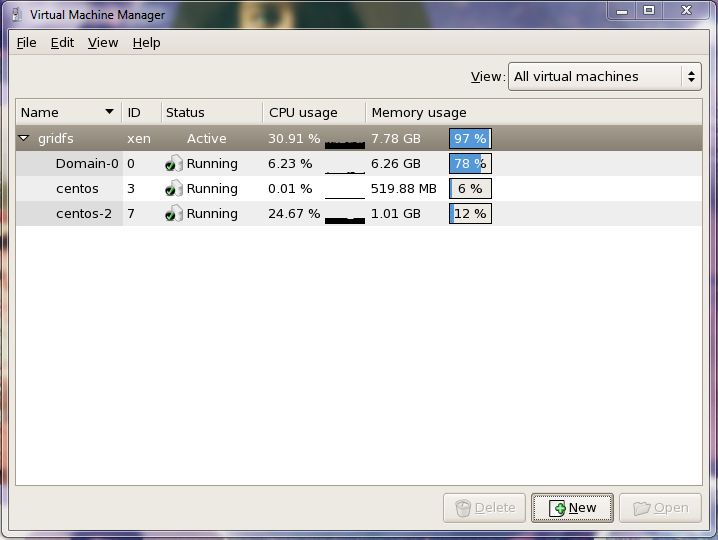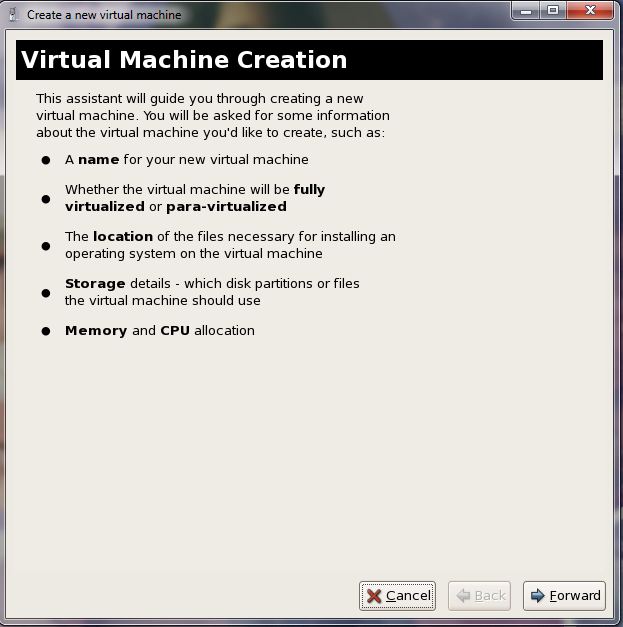Question: I have a Red Hat Enterprise Linux version 5.5 operating system running on an Intel Xeon machine that supports VTx. I would like to know how to install Xen virtualization software and launch a guest virtual machine on top of it?
Answer:
Xen is an Open Source software that allows you to provision virtualized resources to guests. Setting up of Xen Virtualization software involves – installation of Xen kernel, xen server (xend), virt-manager (GUI tool to create, destroy and manage virtual machines). The Xen kernel runs on top of Linux kernel and is responsible for launching Dom0 (default and first virtual machine), the only VM that interacts directly with the system hardware.
Installing Xen hypervisor on Linux
Pre-requisites: You need ‘root‘ privileges.
Install Xen packages using Yum command.
# yum install xen virt-manager kernel-xen
Note: If ‘yum’ returns an error as “Error: Nothing to do“, then scroll down to the bottom of this page to see the fix.
The above command will install Xen server, Xen-kernel and virt-manager. The Xen-server (xend) would have started by default. If not, you should start the server:
#/etc/init.d/xend start
Allow xend to start automatically upon system reboot.
# chkconfig xend on # reboot
Note: Make sure to boot the system using Xen kernel.
To boot the system automatically using Xen-kernel, edit /etc/grub.conf to have xen-kernel as the first entry and default=0
default=0 timeout=5 splashimage=(hd0,0)/grub/splash.xpm.gz hiddenmenu title Red Hat Enterprise Linux Server (2.6.18-398.el5xen) root (hd0,0) kernel /xen.gz-2.6.18-398.el5 module /vmlinuz-2.6.18-398.el5xen ro root=LABEL=/ rhgb quiet module /initrd-2.6.18-398.el5xen.img title Red Hat Enterprise Linux Server (3.2.59-1.el5.elrepo) root (hd0,0) kernel /vmlinuz-3.2.59-1.el5.elrepo ro root=LABEL=/ rhgb quiet initrd /initrd-3.2.59-1.el5.elrepo.img
How to launch a Virtual Machine (VM) using virt-manager
#virt-manager &
The above command will launch the virt-manager – a GUI application that allows you to create, manage and destroy virtual machines.
Select the host and click “New” button at the bottom to setup a new virtual machine. Follow the on-screen instruction to select a disk image, allocate RAM, hard disk and installation of the operating system etc…
Create virtual machine from command-line
You can also create new virtual machines using xen command line tools. To do that, you need to run the below command.
# virt-install \ --name test-host \ --ram 1024 \ --file /dev/sdc \ --network bridge:eth0 \ --cdrom /tmp/centos.iso
XM monitoring commands
View the list of VMs that are currently created and its status
#xm list Name ID Mem(MiB) VCPUs State Time(s) Domain-0 0 6415 4 r----- 2905.5 centos 3 520 1 -b---- 46.8 centos-2 8 1032 1 ------ 4.6
Display the uptime of all virtual machines, including the Dom0
#xm uptime Name ID Uptime Domain-0 0 21:45:02 centos 3 6:15:18 centos-2 8 0:03:07
Real-time monitoring of virtual machines (CPU, MEM usages)
#xm top
Display host information
#xm info
Display domain virtual processor information
#xm vcpu-list Name ID VCPUs CPU State Time(s) CPU Affinity Domain-0 0 0 0 -b- 1018.2 0 Domain-0 0 1 1 -b- 613.2 1 Domain-0 0 2 2 -b- 590.2 2 Domain-0 0 3 3 r-- 785.6 3 centos 3 0 1 -b- 47.0 any cpu centos-2 8 0 3 -b- 17.8 any cpu
Display virtual network information of a domain
Get the domain names using the below command:
#xm list
Get the virtual network interface information using the below command:
#xm network-list centos Idx BE MAC Addr. handle state evt-ch tx-/rx-ring-ref BE-path 0 0 00:16:3e:6b:67:9b 0 4 5 797 /798 /local/domain/0/backend/vif/3/0
Display domain node information
#virsh nodeinfo CPU model: x86_64 CPU(s): 4 CPU frequency: 2400 MHz CPU socket(s): 1 Core(s) per socket: 4 Thread(s) per core: 1 NUMA cell(s): 1 Memory size: 8379392 kB
Display domain virtual CPU information
#virsh vcpuinfo centos VCPU: 0 CPU: 1 State: idle CPU time: 47.1s CPU Affinity: yyyy
Display xend log
#xm log #xm dmesg
Errors and Solution while Installing Xen
Yum returns ‘Error: Nothing to do’ while ‘yum install xen’ on CentOS 6.4
Solution:
# yum install http://fedora.cu.be/epel/6/i386/epel-release-6-8.noarch.rpm
The above command will install epel repository. Now run the below command,
# yum install centos-release-xen
# yum install xen
Error: Cannot retrieve metalink for repository: epel. Please verify its path and try again
Solution : Fix for “Cannot retrieve metalink error while executing yum install xen“




